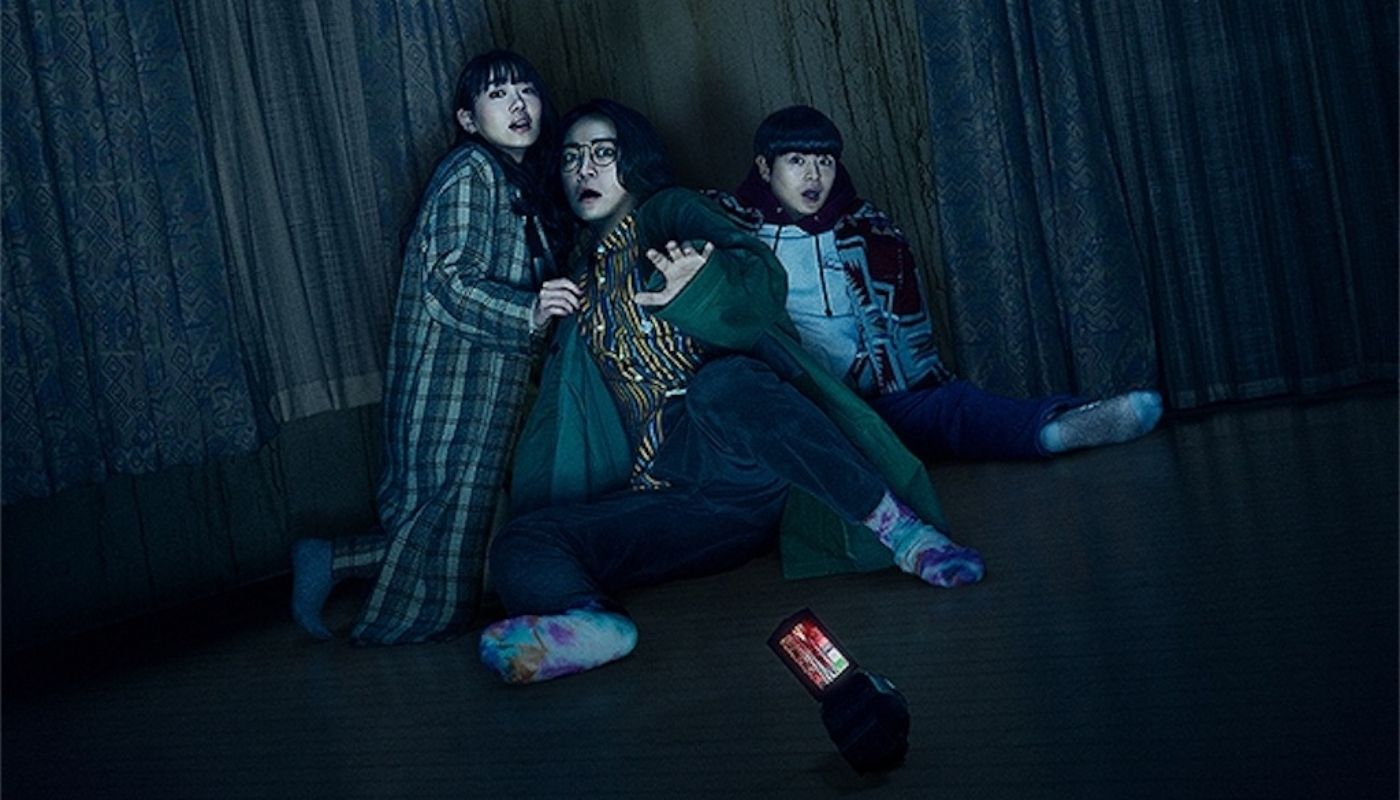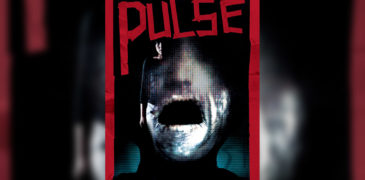
It goes without saying that director Hideo Nakata is one of the most celebrated filmmakers when it comes to Japanese horror. Having helmed two exceptionally well-received adaptations of Koji Suzuki novels, Ringu and Dark Water, which were also heavily responsible for kicking off the J-horror boom overseas, Nakata has continued exploring the supernatural world in his work with only a few departures here and there. Interestingly enough, none of his later films managed to garner the same attention as the two mentioned above, and some online critics have even stated that they outright disliked his later contributions to horror, especially The Ring Two, which was a follow-up to Gore Verbinski’s acclaimed American adaptation of the film Nakata is most known for. While I don’t personally agree with their sentiments (I actually thoroughly enjoyed The Complex and have been eager to revisit it) I do agree that his most recent efforts have lacked a certain effervescence that was present early on in his career. Even his most recent Sadako film, which marked his return to the series after 21 years, was a bit of a disappointment for me as it was devoid of the somber atmosphere that permeated the original. With that said, I do find it unfair to compare his entire filmography to Ringu, so I will refrain from doing so in this review.
Those of you who are keen on the paranormal superstitions of Japan will probably not be unfamiliar with “jiko bukken”, otherwise known as stigmatized properties, where the former tenant(s) died of unnatural causes, e.g. suicide, murder, or neglect. Even if you’re not familiar with the term, you may have come across an article or video clip while browsing the net about how cheap the rent is for certain properties in Japan; landlords are required to inform potential renters of such deaths, and in turn offer sizable discounts in order to attract tenants who would otherwise reject the idea of moving into an undoubtedly haunted home. This is the backdrop for Nakata’s Stigmatized Properties, and to specify even further, it is based on the best-selling non-fiction work by comedian Tanishi Matsubara, who famously stays at these properties and documents his experiences. (The Guardian produced a short documentary that follows Matsubara’s process and can be viewed here.) Films that are allegedly based on real life events often take numerous creative liberties and are sometimes criticized for it, but I was curious to see if and how Nakata balanced the more grounded aspects of the story with the cinematic panache he’s known for.

The film revolves around Yamame Yamano, an eccentrically dressed stand-up comedian who just can’t seem to catch a break in his line of work. When performing a comedy sketch with his colleague and friend Taisa Nakai as the “Jonathans”, the audience members are dead silent and visibly unimpressed. The only person who seems to be enjoying the show is Azusa Kosaka, a young woman who happens to be a fan of theirs. However, Azusa’s laughter and applause is not enough to encourage the Jonathans, and they decide to disband shortly after their performance. Yamame, having dreamed of becoming a successful comedian ever since he was a child, is not ready to give up and is taken to a TV studio where Taisa attempts to pitch him as the lead for a new segment. After a myriad of ideas are rejected by the producer, Taisa brings up a story of an alleged haunted apartment that recently had people talking. The idea of having Yamame spend the night at this apartment and capturing footage for the network is almost instantly given the approval, much to his surprise, and he passively accepts the opportunity in hopes that it will lead him to mild success, at the very least.
In true horror film tradition, the footage he captures during his stay at the infamous apartment exhibits a seemingly real-life paranormal phenomena; a strange white mist encircles Yamame’s countenance as he speaks on the phone with the producer and quickly dissipates only moments after. The producer claims to have heard a woman laughing while on the call with Yamame, but the footage itself proves that he was alone the entire time. As it turns out, this footage gains immense traction after it airs, which bodes well for both Yamame and the TV station. Azusa, who is now working as a make-up artist assistant for this same station, runs into Yamame and Taisa and is invited to have dinner with them. At some point during their hangout, Taisa expresses interest in visiting the building where the ghostly footage was taken, and the three of them end up doing so after their meal. It is revealed that Azusa was born with the ability to see paranormal entities after she notices a ghastly shadowy figure outside of the apartment. Once this is established, the three of them band together to try and uncover the origins of the entities residing in the other stigmatized properties they eventually visit for more episodes of the program. Continuously messing with the supernatural isn’t exactly a recipe for success though, is it?

Audience expectations can either make or break a film. When it comes to Stigmatized Properties, I imagine that most people will expect a very grounded horror experience based on the trailer alone, but even more so if they’re familiar with the non-fiction piece of literature that inspired it. The most surprising aspect of the film is that it does the complete opposite; there are certainly a number of sensible scares that utilize modern day technology in ways we would expect from Nakata, such as the face detector on someone’s cellular device capturing something that is physically inconspicuous, but when the film reaches the second act things start to get increasingly facetious. I was especially taken aback by the comically over the top finale involving a recurring entity wearing a hooded cloak that is never formally explored. At this point in the film I began to wonder if the camp was intentional. Yamame does eventually begin to insert his frightening experiences into his comedy, so the correlation is not much of a stretch. This is where I think my expectations clouded my judgement a bit because for all I know, the novel might have been written with the same frivolous tone. Unfortunately the book has yet to make its way overseas, despite having sold well over 100,000 copies and spawning equally popular follow-ups tackling similar themes. If the film ever gets released outside of Japan, a translated copy of the book would surely make for a neat bundle!
In spite of my personal disappointments with the scare factor, I did end up finding a lot to enjoy overall. The three lead characters are all amply likeable with Yamame, played by Kazuya Kamenashi, being the standout. I have no doubt in my mind that plenty of aspiring artists will relate to his pertinacity towards a financially precarious career path. He becomes progressively endearing after explaining his reason for being so passionate about comedy to Azusa over dinner, and it answers the question that audiences may have regarding his refusal to stop visiting notoriously haunted residencies. He also rocks some fashionable white creepers through most of the film, which I appreciated! Azusa, played by an actress named Nao, was instantly on my good side after witnessing her enthusiasm during the opening Jonathans show. Some of her reactions to the ghosts she encounters are a bit over the top, but they conveniently match the mood of the rest of the film. Taisa, played by Koji Seto, who you might recognize from Sadako 3D (it’s a small world of horror after all) receives the least amount of screen time, but exudes a suitable amount of conviviality that only compliments the trio even further.

A campy horror film is not at all what I expected from Hideo Nakata, especially when its story is based on such a popular real-life phenomena. Like with most films, the best way to view this is through a specific lens of expectation; it teeters between being an updated version of the beloved urban myth meets modern technology amalgamation and an almost two hour long Goosebumps episode. Those of you looking for a horror flick that will scare the hell out of you and make you sleep with the lights on will have to look elsewhere, but if you’re open to watching a playful spookfest, Stigmatized Properties will no doubt provide some solid entertainment. I do actually recommend this to fans of Nakata’s previous work as I believe it will cater to them more than to a casual viewer. Part of the enjoyment for me was knowing he was the man behind the camera, and although I haven’t been a fan of ALL his films, I’ll always be eager to see what project he’ll be involved in next. And as for Tanishi Matsubara.. I’m waiting for the day that we all get the chance to read his book!

More Film reviews:
Funny Games (2007) Editorial – Are You Not Entertained?
Funny Games begins with an idealised, upper-middle-class family, driving through lush green woodland, beside sun-baked lakes, and playing “guess the classical composer” on the car’s audio system. The mild serenity…
Canadian Shorts After Dark Showcase – Toronto After Dark Film Festival 2022
In addition to those that played ahead of the main features, the Toronto After Dark Film Festival screened eight more Canadian shorts in a dedicated showcase. From stop-motion animation to…
Evil Eye (2022) Film Review | Toronto After Dark Film Festival
Toronto After Dark Film Festival describes Isaac Ezban’s latest as “possibly the scariest film in [their] lineup this year,” and it is not difficult to see why. Balancing storybook wonder…
One Cut in the Life (2020) Film Review – A Poignant Portrayal of Emotional Stress
Featured in JFFH (Japanese Film Fest Hamburg), One Cut in the Life is a poignant drama written, produced, and directed by Shintaro Hachi- a relatively unknown, up-and-coming filmmaker. He stated,…
Livescreamers (2023) Film Review – Scream Your Heart Out [Unnamed Footage Festival 7]
Not since 2006’s Stay Alive has video gaming been in the spotlight of horror in the way it is in 2023’s Livescreamers. Directed by Michelle Iannantuono, this sequel to the…
Pulse (2001) Film Review – Isolation and Loneliness
It has now been 24 hours since I watched Pulse (2001), and I still find myself at a loss. It was a movie that I desperately wanted to enjoy, a…

Your typical ghoul next door; film enthusiast, horror fanatic, J-horror nerd, aspiring horror host, and all around geek. Will likely be found cuddling with their cat and reading an old smelly book, or stuffing their face with popcorn at the cinema!




![Livescreamers (2023) Film Review – Scream Your Heart Out [Unnamed Footage Festival 7]](https://www.grimoireofhorror.com/wp-content/uploads/2024/03/Livescreamers-2023-cover-Fixed-365x180.jpg)
